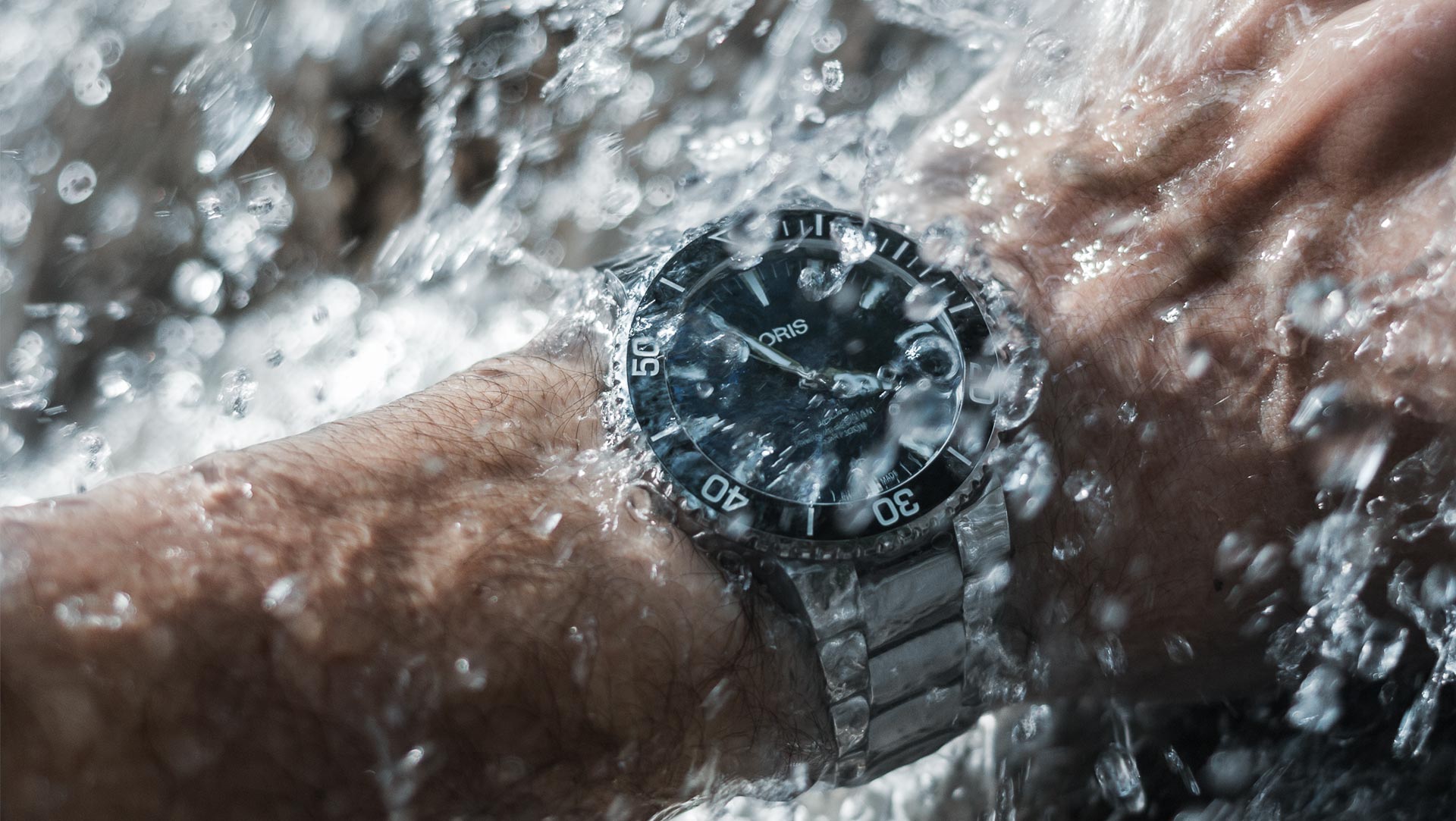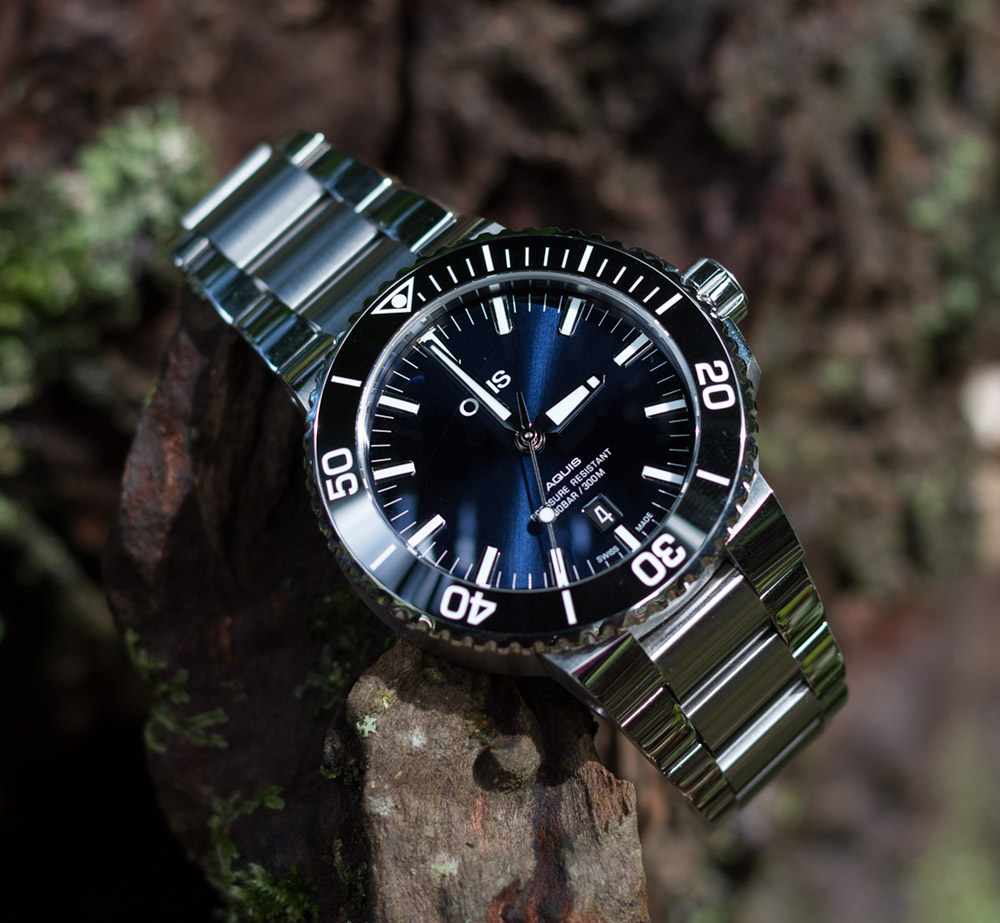
Swiss Oris’ signature dive watch line, the Aquis, is popular and well-known for good reason. So much so, in fact, that it’s difficult to know where to begin a review of the most basic model shown here, the Oris Aquis Date. Long recognized as a solid tool watch, a design refresh in 2017 makes this second-generation Aquis more refined and wearable, and in my opinion, darn near perfect for someone who wants a handsome, versatile, and bold-wearing modern dive watch.
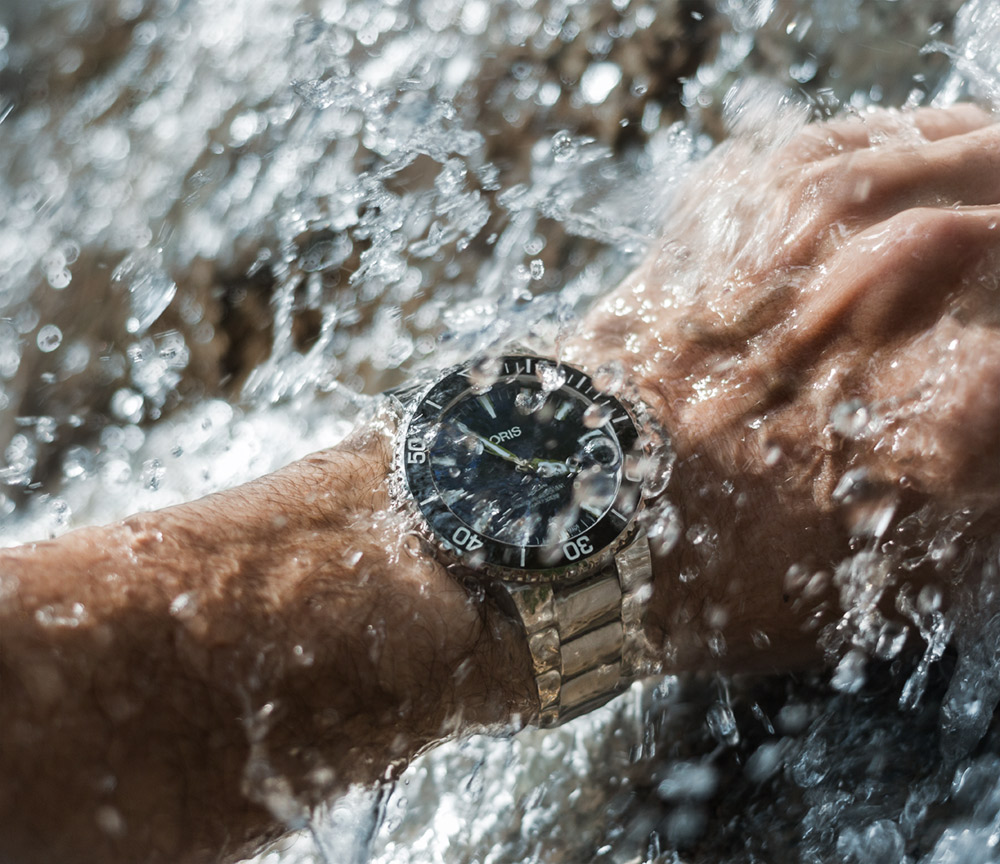
There is no doubt that the Oris Aquis manages to stand out in the vast ocean of dive watches out there, and that alone is a notable accomplishment. It maintains a relatively conservative and functional dive watch design, yet is able to make it distinctive and modern. Many of the new “vintage-inspired” dive watches coming out are lovely, but a genuinely modern design that doesn’t interpret that as futuristic or avant-garde is refreshing. Of course, the excellent build quality for the circa $2,000 price helps a lot too.
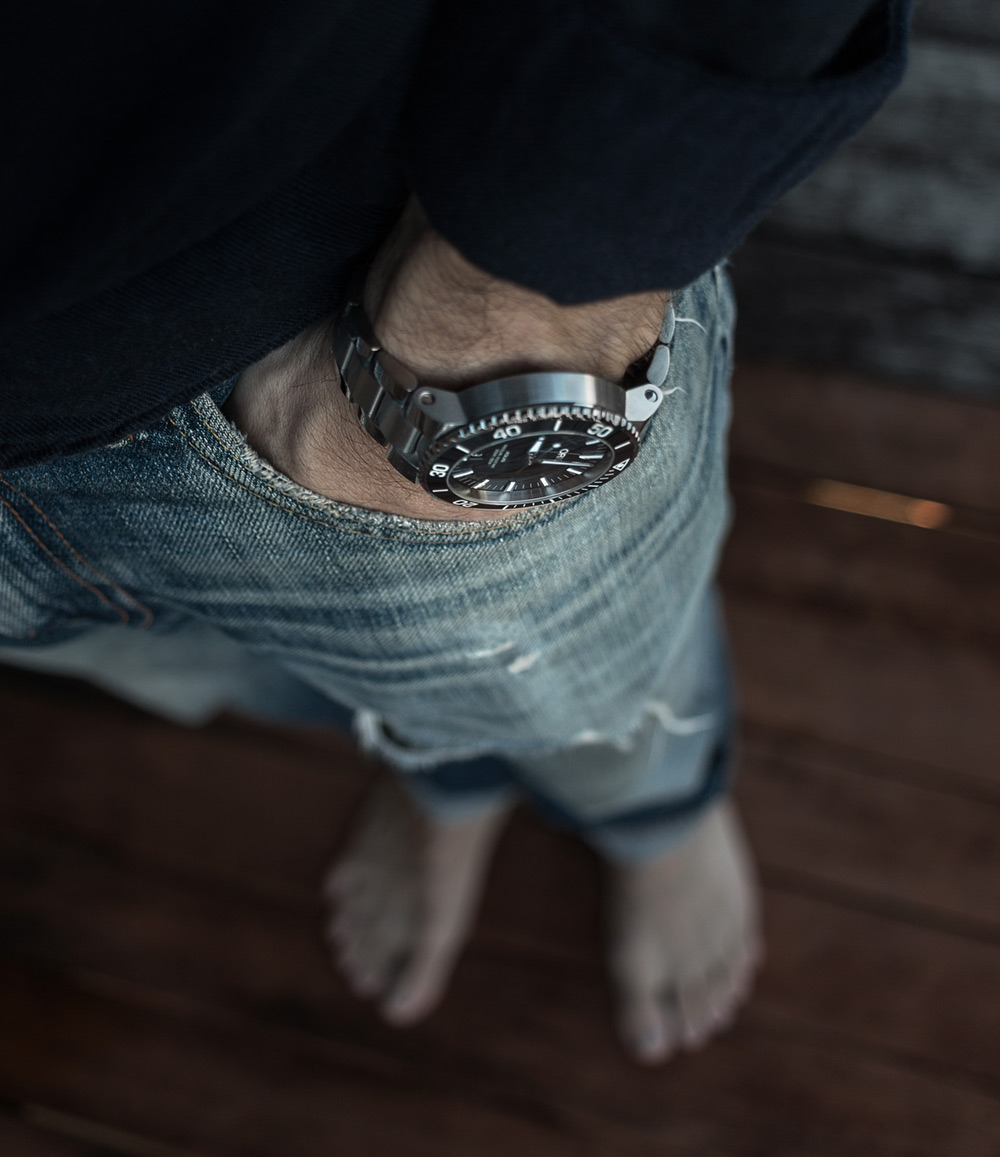
The 2017 version may have sacrificed some distinctiveness for the sake of refinement, but I feel it was worth it. While the measurements are nearly unchanged, the new design tweaks have made what many considered a large (often too large) and bulky tool watch into a more versatile daily-wear. It’s a good case study in how measurements don’t tell the whole story of how a watch will wear on the wrist, as well as how much difference small design choices can make. The original Oris Aquis Date was actually half a millimeter smaller (at 43mm) in width than this one that is 43.5mm wide (47mm with the crown), but it seemed to wear larger in my experience. How is that possible?

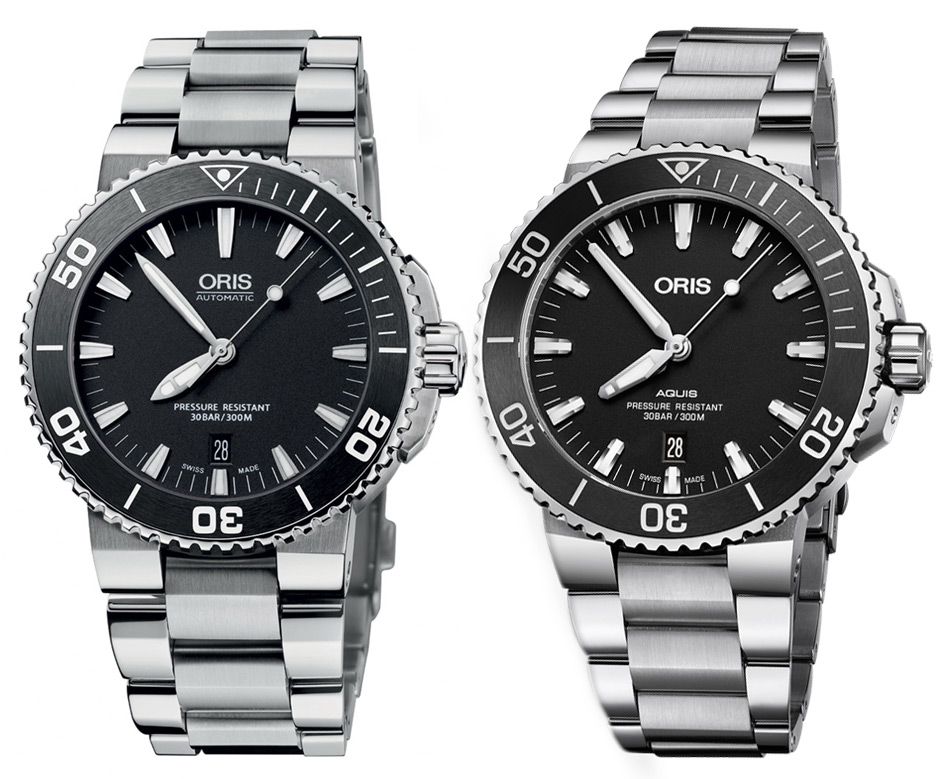
It starts with some simplification and toning back of the angular lugs and crown guards that help the overall design simply flow better. Notice in the comparison image above that the lugs’ step is no longer straight across but angled. I don’t have a first-generation Aquis on hand to measure, but I believe that the result is slimmer lugs and a shorter lug-to-lug distance – the 2017 Oris Aquis Date is 50mm lug to lug.
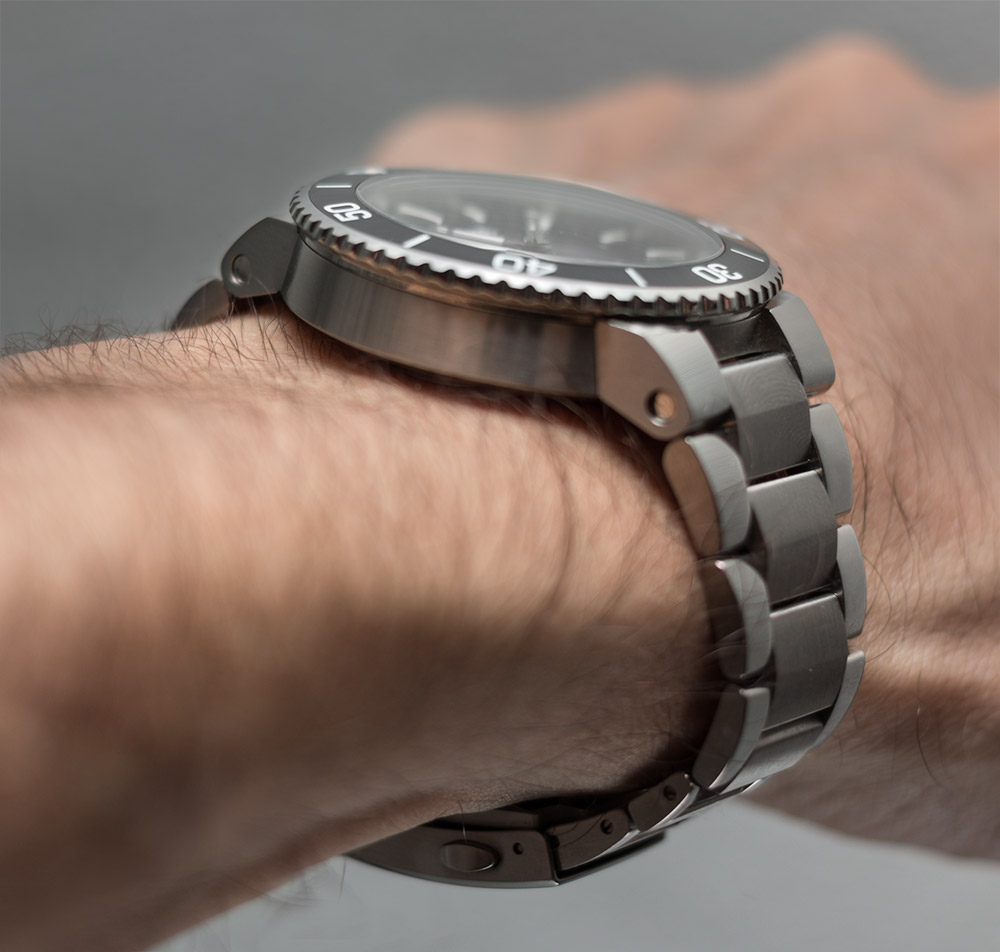
The bracelet is also slimmer and more tapered, significantly reducing the bulk. While we’re on that point, I will mention that the integrated bracelet and straps Oris offers mean not many strap changing options. But in this instance, the bracelet is so nice I doubt I would even be inclined to change it anyway. The clasp is also in line with the rest of the watch’s solid build, is easy to use, and includes a diver’s extension for fitting over a wet suit (which I haven’t used). There are also leather and rubber straps available. The bracelet is definitely the recommended way to go, however, not least because Oris’ rubber straps are designed for the end to slip underneath and they tend to bunch up under the wrist. I have not found them comfortable, and they might require cutting.
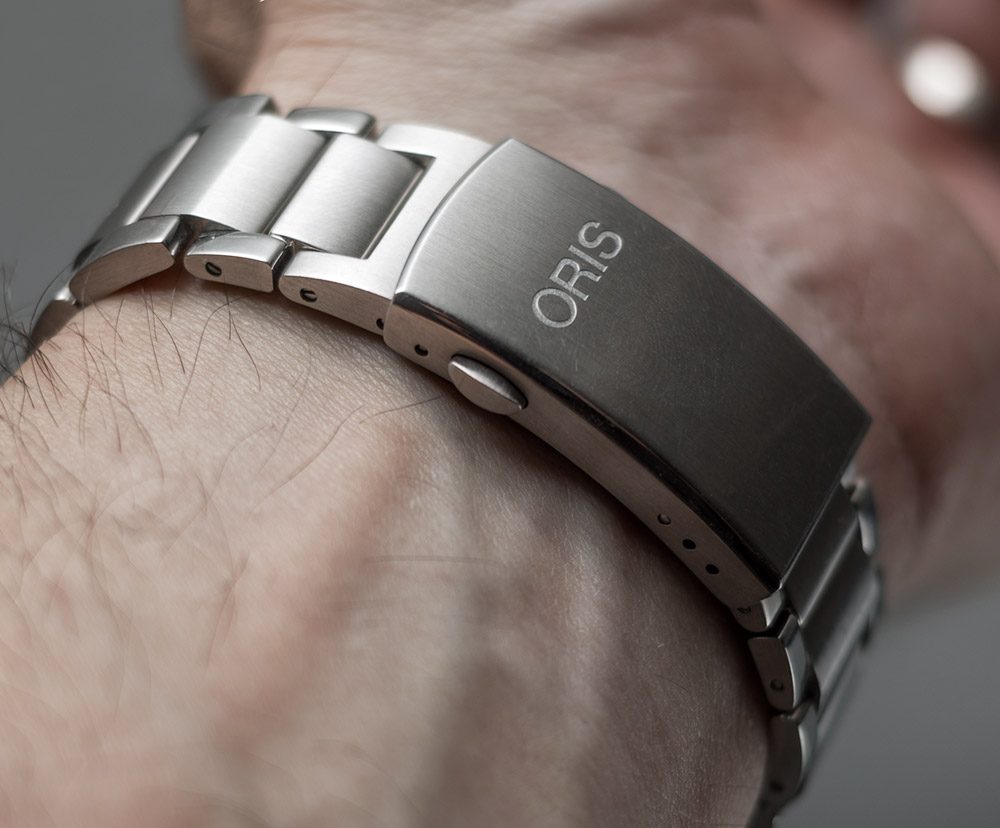
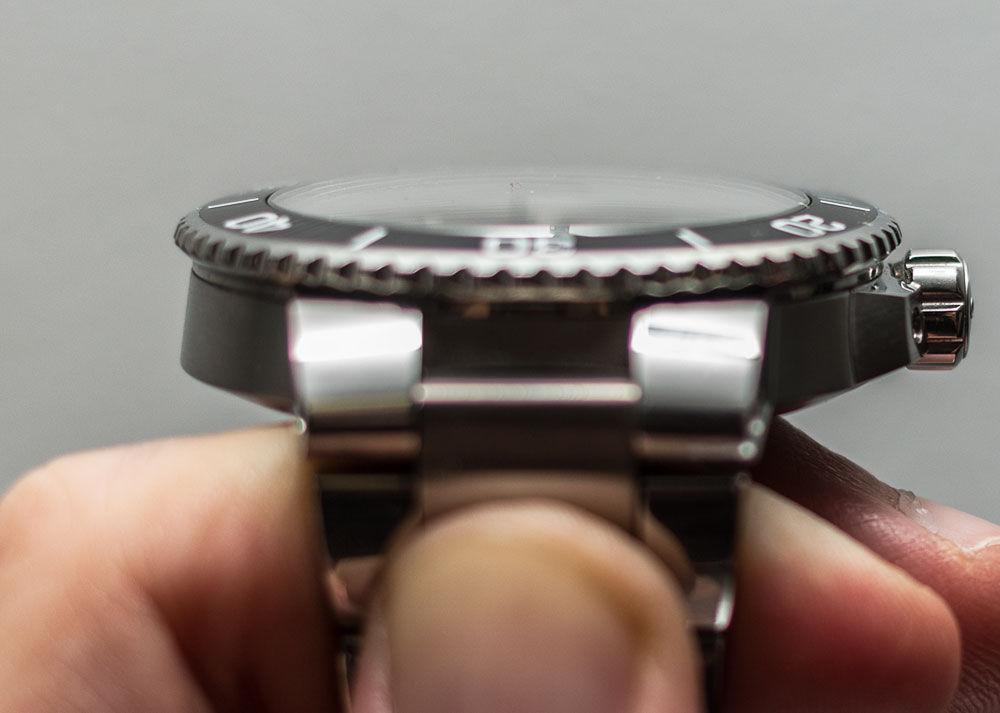
Now, back to the case. I tried to show in the image above how the case tapers outward toward the bottom to the same width as the bezel. This is an interesting detail I believe is carried over from the original Aquis, and it also helps make the bezel easier to grasp and use. The sound and feel of the 120-click unidirectional rotating bezel are solid and satisfying, and the same can be said for the screw-down crown (which is something I always tend to notice). You can see on the underside how the case has cutaways for the crown guards that are fitted with screws.

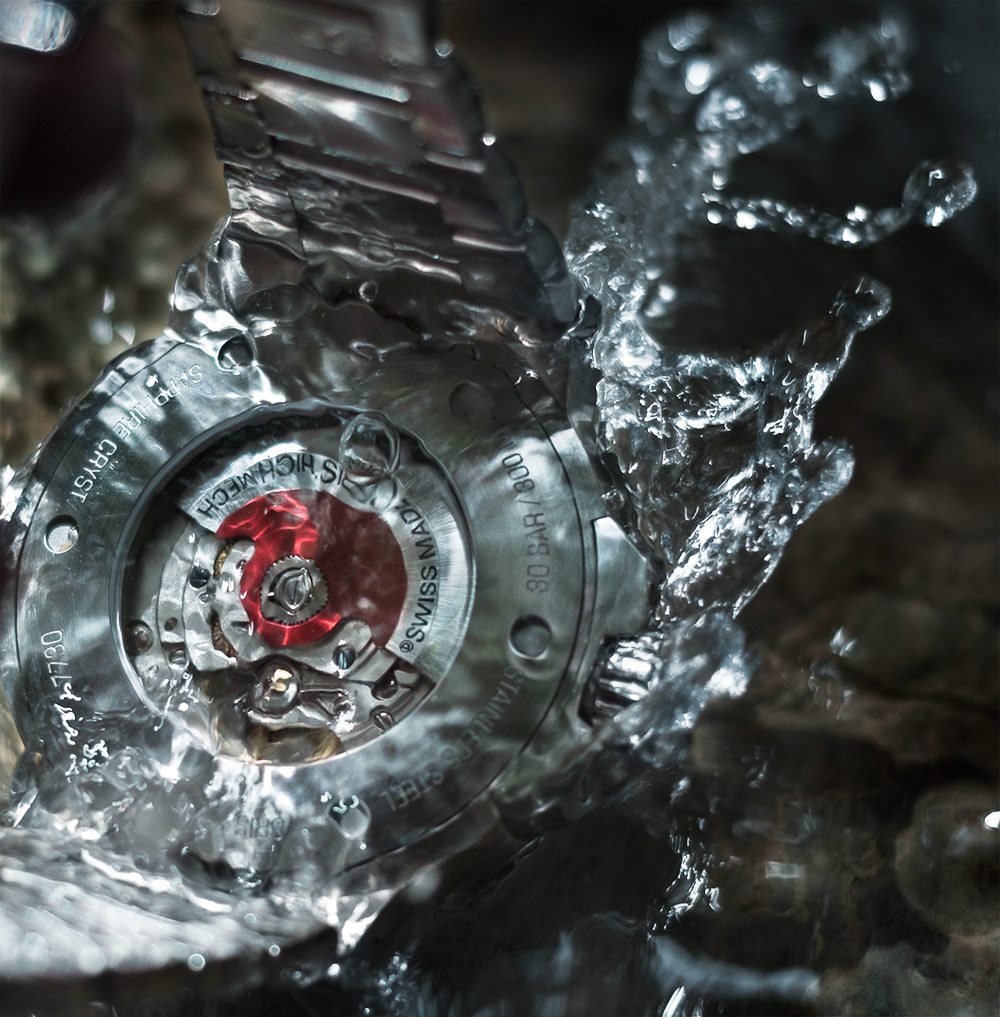
Here at the caseback the movement is on display, and it is relatively rare for dive watches such as this with 300m of water resistance to have a display window. You’re looking at a common Swiss Sellita SW-200-1 (“Oris 773,” though the brand is transparent in naming the “base”) automatic movement with a standard 38 hours of power reserve, operating at 4Hz – so it’s not about admiring haute horology finishing, but is a bonus and I consider it added value. And I enjoy the signature red Oris rotor. It was pretty cool, actually, to take the Oris Aquis swimming and, after taking it off, be able to observe that delicate movement ticking away dryly even while in the water.
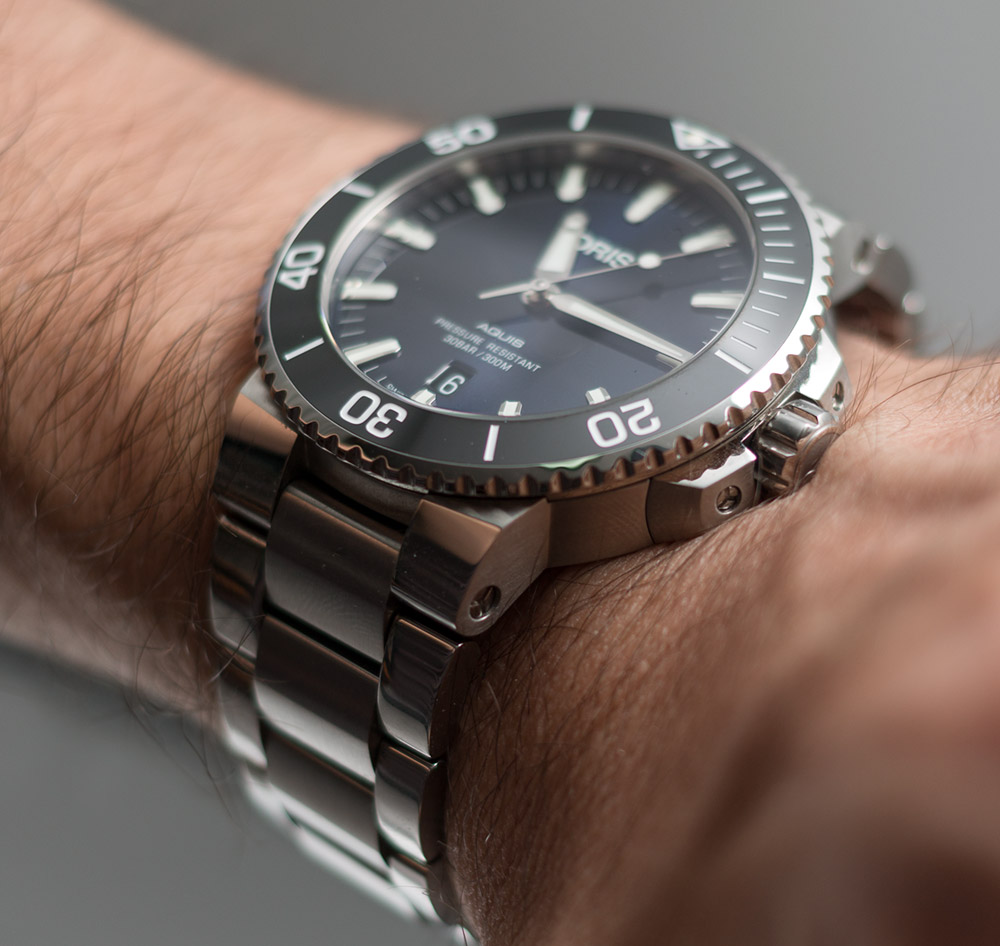
With the domed sapphire crystal total thickness is 12.5mm, and combined with the glossy ceramic bezel insert the Oris Aquis Date presents a more or less scratch-proof facade – but it is a shiny facade. Allow me a slight tangent here. I love and actually prefer an elegantly double-domed and magically limpid sapphire crystal, but domed crystals in particular do tend to attract reflections. I feel this is worthwhile to point out and would not be doing my job in reviewing this watch if I failed to mention and discuss the reflective crystal. While the quality of anti-reflective (AR) coating may not even register consciously for a lot of people looking at watches, and some may consider my preoccupation a matter of personal taste, I do believe it affects the overall wearing and ownership experience – it’s not just about it being difficult to photograph for reviews or Instagram…

